Product Images Sodium Phenylacetate And Sodium Benzoate
View Photos of Packaging, Labels & Appearance
Product Label Images
The following 7 images provide visual information about the product associated with Sodium Phenylacetate And Sodium Benzoate NDC 70511-102 by Maia Pharmaceuticals, such as packaging, labeling, and the appearance of the drug itself. This resource could be helpful for medical professionals, pharmacists, and patients seeking to verify medication information and ensure they have the correct product.
carton - carton label
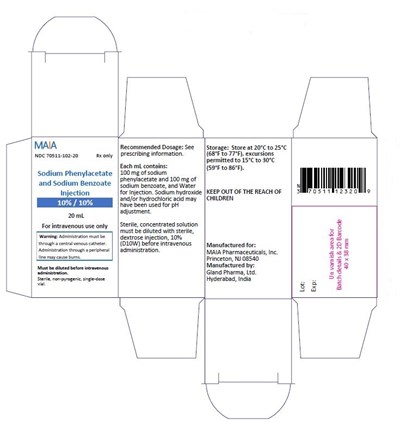
Recommended dosage, storage, and prescribing information for a medication containing Sodium Phenylacetate and Sodium Benzoate, which is for intravenous use only and should be kept out of reach of children. The medication may be used to adjust the pH level, and the concentrated solution must be diluted before administration. Manufactured by MAIA Pharmaceuticals and Glond Pharma. Storage temperature is 20°C to 25°C. Excursions permitted to 15°C to 30°C (55°F to 86°F).*
Figure 2 - figure 2
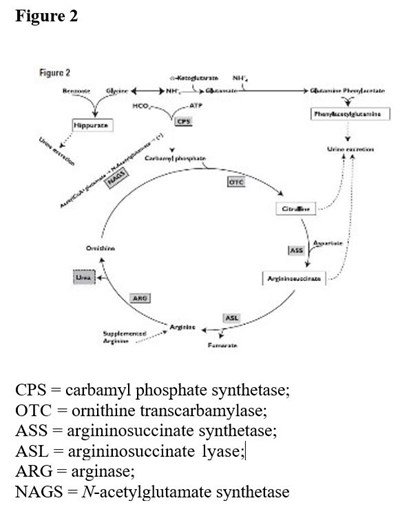
This is a diagram labeled Figure 2, which lists various enzymes and their corresponding abbreviations. It includes CPS (carbamyl phosphate synthetase), OTC (ornithine transcarbamylase), ASS (argininosuccinate synthetase), ASL (argininosuccinate lyase), ARG (arginase), and NAGS (N-acetylglutamate synthetase). This information may be useful in the study of biochemistry or related fields.*
Table 1 - table 1 revised
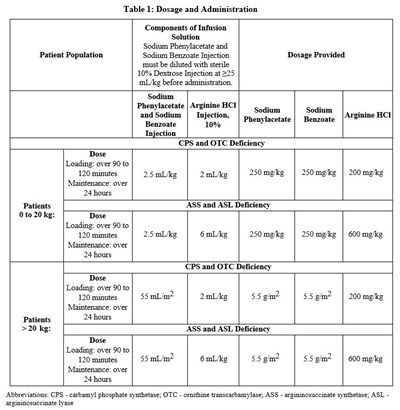
This is a table outlining Dosage and Administration instructions for Sodium Phenylacetate and Sodium Benzoate Injection solution to treat CPS, OTC, ASS, and ASL Deficiency. The components of this solution must be diluted with sterile 10% Dextrose Injection before administration. The dosage instructions are given for Loading (over 90 to 120 minutes) and Maintenance (over 24 hours) for different patient populations with different deficiencies. Several abbreviations, such as CPS, OTC, ASS, and ASL, are used in the table.*
Table 2 - table 2
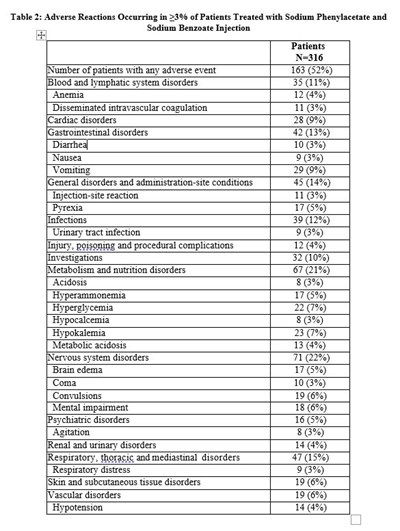
This is a table of adverse reactions occurring in 23% of patients who received Sodium Phenylacetate and Sodium Benzoate Injection. The table contains a list of disorders such as anemia, vomiting, injection-site reactions, brain edema, coma, convulsions, respiratory distress, and hypotension, among others. The percentage of patients experiencing each adverse event is also provided.*
Table 3 - table 3
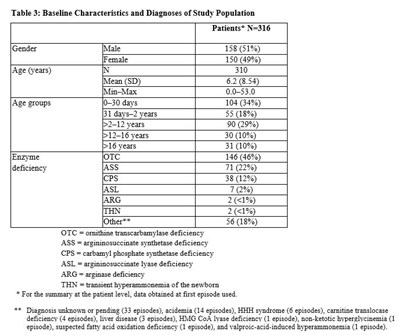
This is a table displaying the baseline characteristics and diagnoses of a study population. The study included 316 patients with gender distribution (male 158 G1%, female 150 49%), and ages ranging from 0 to 530 years. The table also shows the percentage of patients with enzyme deficiency, including OTC (ornithine transcarbamylase), ASS (argininosuccinate syathetase), CPS (carbamyl phosphate synthetase), ASL (argininosuccinate lyase), ARG (arginase), and THN (transient hyperammonemia of the aewbora). The table mentions a few other diagnoses not included in the percentage calculation due to lack of data or pending diagnosis.*
Vial - vial label revised
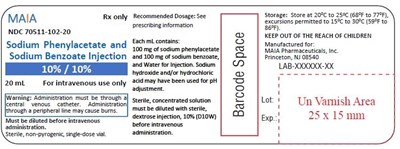
This is a prescription drug called Sodium Phenylacetate and Sodium Benzoate Injection presented in a sterilized single-dose vial suitable for intravenous use only. The drug contains 100mg of sodium phenylacetate, 100mg of sodium benzoate, and Water for Injection. It must be diluted with Dextrose Injection before IV administration. The recommended dosage should be obtained from the prescribing information. Administrators must be trained on its proper administration, and a central-venous catheter should be used to avoid burns. There is a warning that its administration through a peripheral line may cause burns. The drug must be stored between 20°C to 25°C, with planned excursions between 15°C to 30°C, and unreachable by children.*
* The product label images have been analyzed using a combination of traditional computing and machine learning techniques. It should be noted that the descriptions provided may not be entirely accurate as they are experimental in nature. Use the information in this page at your own discretion and risk.
